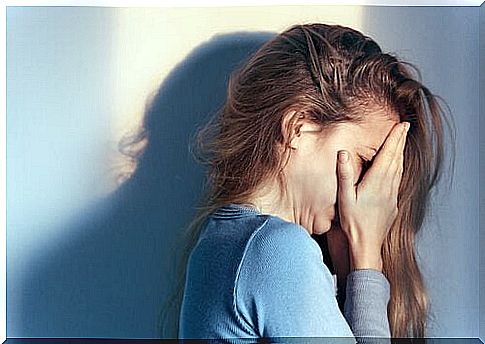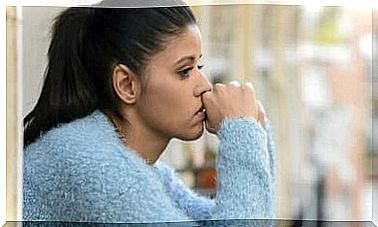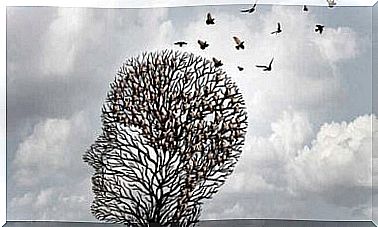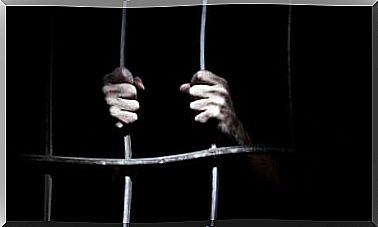Therapy Can Help With Pathological Grief
Losing someone you love is extremely hard. It will happen to all of us someday. But not everyone has the same resources or skills to deal with them. Sometimes this process develops into a chronic and serious problem. However, in pathological grief, therapy can help.
Researchers estimate that these types of chronic problems occur in 10 to 20 percent of cases when someone is going through a grieving process. For these situations, there are several techniques that support multiple studies. They help us break out of this situation.
We are going to discuss one of those techniques. We call this form of therapy controlled grief. But before we begin, we must distinguish between normal and pathological grief. So this is our question: to what extent is suffering still normal?
Normal mourning and pathological mourning
Grieving or grief consists of a series of reactions that occur on a physical, emotional and social level. They are triggered by a major loss. In this case, it is about the death of a loved one.
The symptoms vary in intensity and duration. In some cases they last a lifetime. However, remember that it is initially an appropriate (good) response.
Mourning, sadness and fear are the most common feelings, in that order. Fear of being alone is also common. We may also feel guilty and lose interest in our surroundings.
These symptoms are normal. But after six months to a year, they should disappear.

When the emotional reactions are much more intense, they make everyday life difficult. And if they last more than a year, you may be suffering from pathological grief.
Here, unusual symptoms of sadness such as hallucinations or suicidal thoughts occur. Pathological grief is often complicated. It can also lead to changes in behavior. Individuals exhibit social isolation, personal neglect, or substance use. At this point, we should consider grief therapy and professional help.
Bereavement Therapy: Therapeutic Strategies
Experts use both individual and group therapy to treat pathological grief. In some cases it is effective to apply both techniques together. The aim of the treatment is to equip people with skills. At the same time, it also provides social support to end their isolation.
Regardless of the technique used, the main goal of grief therapy is not to forget the deceased, but to reshape the grieving process in such a way that the memory of the deceased does not cause a blockage. These are the basic goals of this therapy:
- Facilitate the expression of feelings and experiences associated with the deceased. Because usually the person has not yet managed to put into words what he feels or thinks. This makes it difficult to get over the loss.
- Discuss the circumstances that led to the death. Depending on how someone died (suicide, sudden accident, terrorist attack, etc.) the grief can be more painful. Talking about it will make adjustment and acceptance easier.
- The therapy will focus on solving everyday problems and on re-adjusting to normal daily life. With small steps people can achieve big results day after day.
- Focusing the patient on the future. The patient is made to incorporate more and more activities into his daily life that give him satisfaction. This will make the patient feel that, despite everything, some things are still good.
Directed mourning
Psychologists use this type of therapy in people who are experiencing pathological grief. They exhibit avoidance behavior, emotional blockage, and nightmares or overwhelming thoughts.
In these cases, orchestrated grief can work. It involves exposing the person to memories associated with the deceased, especially shared experiences.
For example, therapists often have their patients read old letters or look at photo albums. Whichever way it happens, the intent is to break the devastating emotional inhibition.
This type of therapy works based on an underlying mechanism. The emotional response (sadness) is a conditioned form of sadness in response to certain stimuli. By repeating these stimuli, one will gradually weaken the emotional response and thus the sadness.
That is, we repeatedly expose the patient to whatever is causing the grief, until that emotion diminishes.
The patient can also be confronted with certain behaviors. These are things that the patient liked to do but no longer does because they evoke memories of the deceased.
Some examples of this are going to the movies, traveling, eating out and so on. In these cases, the satisfaction provided by the activity will also serve as the underlying mechanism for the effect of the therapy.
Signs of recovery after pathological grief

How do we know whether the therapy has worked for pathological grief? Which behaviors determine the recovery from pathological grief? These are a series of signs or signals that indicate recovery:
- The person has regained their normal biological aspects, such as appetite and sleep.
- The physical expression of feelings such as smiling and hugging has returned.
- The person concerned begins to do pleasant things again. He or she resumes social life and even participates in voluntary activities to help others.
- The memory of the deceased is already included as part of their personal story. It no longer provokes strong negative emotions. He remembers the positive experiences he shared with the deceased.
- He enjoys everyday life and sets goals for the future.
In summary, we can say that grief or grief is a normal process that requires personal growth. It’s not always easy to get through. Knowing what pathological grief is and some ways to treat it can help us recognize the final goodbye and cope with the grief. In addition, it can motivate us to seek professional help when we need it.









